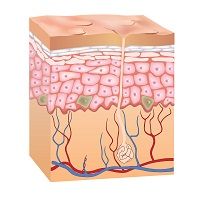Article
Potential New Treatments for Often-Nefarious Skin-Picking Disorder
Author(s):
Skin-picking disorder (SPD) is a serious and poorly understood condition similar to hair-pulling disorder and severe nail biting, among other body-focused repetitive behaviors, in which a patient causes harm to themselves or their appearance. SPD is much more than a cosmetic problem, as repetitively touching, rubbing, scratching, or picking at the skin can lead to severe tissue damage, disfigurement, and even significant infection in some cases.

Skin-picking disorder (SPD) is a serious and poorly understood condition similar to hair-pulling disorder and severe nail biting, among other body-focused repetitive behaviors (BFRBs), in which a patient causes harm to themselves or their appearance. SPD is much more than a cosmetic problem, as repetitively touching, rubbing, scratching, or picking at the skin can lead to severe tissue damage, disfigurement, and even significant infection in some cases.
SPD can affect as much as 4% of the population, and a lack of established pharmacological options for treating it can lead to serious consequences for patients. This difficulty is compounded by the fact that many patients—out of fear, embarrassment, or the belief that they are the only ones suffering from SPD—don’t seek treatment for it. Current treatments include psychiatric intervention and cognitive behavioral therapy.
A recent study published in the open access journal PLOS ONE suggests that ulcerative dermatitis treatment (UD) in mice can serve as a model for human SPD based on similarities in epidemiology, behavior, and comorbidities. UD is the leading avoidable cause of death in laboratory mice. The study shows that the compounds N-Acetylcysteine (NAC) and glutathione can be effective in treating skin-picking disorder in mice and therefore may be an option for treating human SPD patients.
While both compounds may be effective, there were significant differences in reaction in mice, both in terms of overall cure rate and the period over which each compound had a therapeutic effect. With NAC, if the animal was cured, it took up to 8 weeks, with the mice slowly responding over the course of the study. With glutathione, 50% of the animals responded rapidly, whereas the other 50% did not respond at all. For both compounds, the pattern seemed to be that the mice that did not respond to treatment tended to be the ones with a more severe case of UD before the therapy began.
According to the study authors, “These findings are the first to show that the use of N-acetylcysteine and Glutathione can be curative for mouse Ulcerative Dermatitis. These findings lend additional support for mouse UD as a model of SPD and also support oxidative stress and glutathione synthesis as the mechanism of action for these compounds.” The researchers believe that the compounds may work because they signal the brain to produce chemicals that protect it against stressors.
The next step would be a clinical trial testing the compound in human SPD patients. Even if solid pharmacological options emerge for treating SPD, it’s important for dermatologists to be aware that SPD and other BFRBs can be a symptom of other dermatological disorders, autoimmune problems, obsessive-compulsive disorder, and substance abuse disorders, among others.




